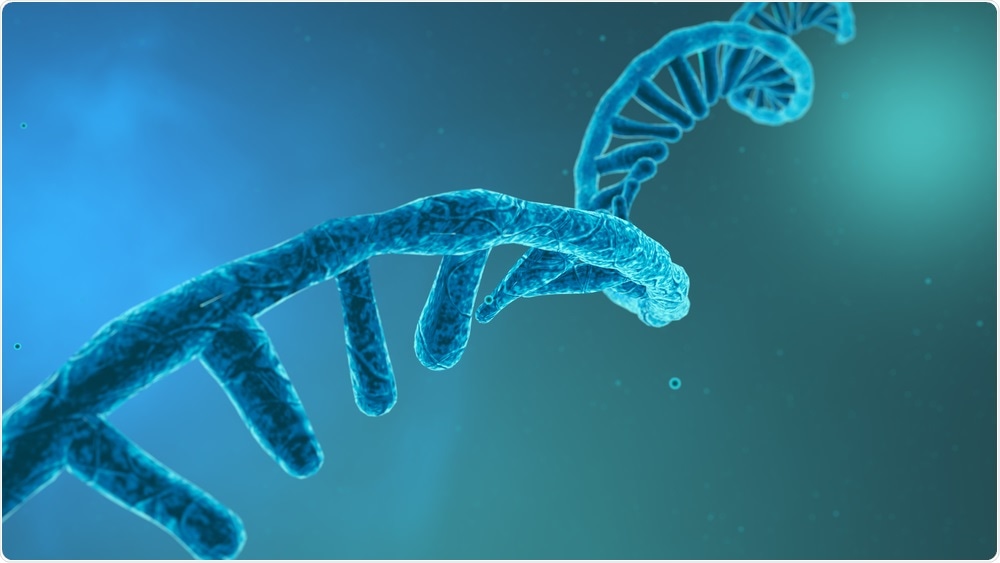A research team from Case Western Reserve University has discovered a new way to quantify the main characteristics of proteins that bind to RNA in cells—a finding that may enhance one’s interpretation of how gene regulation is disrupted in infections, neurodegenerative diseases, or cancer.

RNA. Image Credit: CROCOTHERY/Shutterstock.com
Ribonucleic acid, or RNA for short, transports genetic instructions inside the body. RNA-binding proteins play a significant function in the expression of genes. Scientists are already aware that the way this RNA-binding protein function relies on their “binding kinetics,” a word that explains how often they bind to a site in an RNA, and how long they remain there.
To date, researchers have not been able to quantify the kinetics of RNA-binding proteins in cells. However, the Case Western Reserve team addressed this long-standing query in RNA biology. These results pave the way to a biochemical understanding of the interactions of RNA proteins in cells.
By understanding the binding kinetics, scientists can quantitatively predict how the expression of thousands of genes is regulated by an RNA-binding protein, and this is crucial for developing strategies that target the interactions of RNA proteins for therapeutic reasons.
The study marks a major step toward understanding how gene function is regulated and how to devise ways to correct errors in this regulation in diseases such as cancer, neurodegenerative disorders or infections.”
Eckhard Jankowsky, Study Principal Author and Professor of Biochemistry, School of Medicine, Case Western Reserve University
Jankowsky is also the director of the school’s Center for RNA Science and Therapeutics.
The team’s study titled, “The kinetic landscape of an RNA binding protein in cells,” was published in the Nature journal on February 10th, 2021. The research was funded by the National Institute of General Medical Sciences and the National Science Foundation.
The co-authors of Case Western Reserve are research associate Deepak Sharma; graduate students Matthew Brister, Leah Zagore, and Xuan Ye; Carlos Crespo-Hernández, professor of chemistry; and Donny Licatalosi, associate professor of biochemistry and member of the Centre for RNA Science and Therapeutics.
To quantify the kinetics of RNA-binding proteins, the team employed a laser that emits incredibly short (femtosecond) ultraviolet light pulses to cross-link the RNA binding protein, called DAZL (short for Deleted in Azoospermia-Like), to its several thousand RNA binding sites. DAZL is involved in the development of germ cells.
The researchers then used high-throughput sequencing to quantify the change in the cross-linked RNA over time and established the binding kinetics of DAZL at scores of binding sites. The “kinetic landscape,” which resulted, allowed the team to decode the relationship between the DAZL binding and its impact on RNAs.
Source:
Journal reference:
Sharma, D., et al. (2021) The kinetic landscape of an RNA-binding protein in cells. Nature. doi.org/10.1038/s41586-021-03222-x.